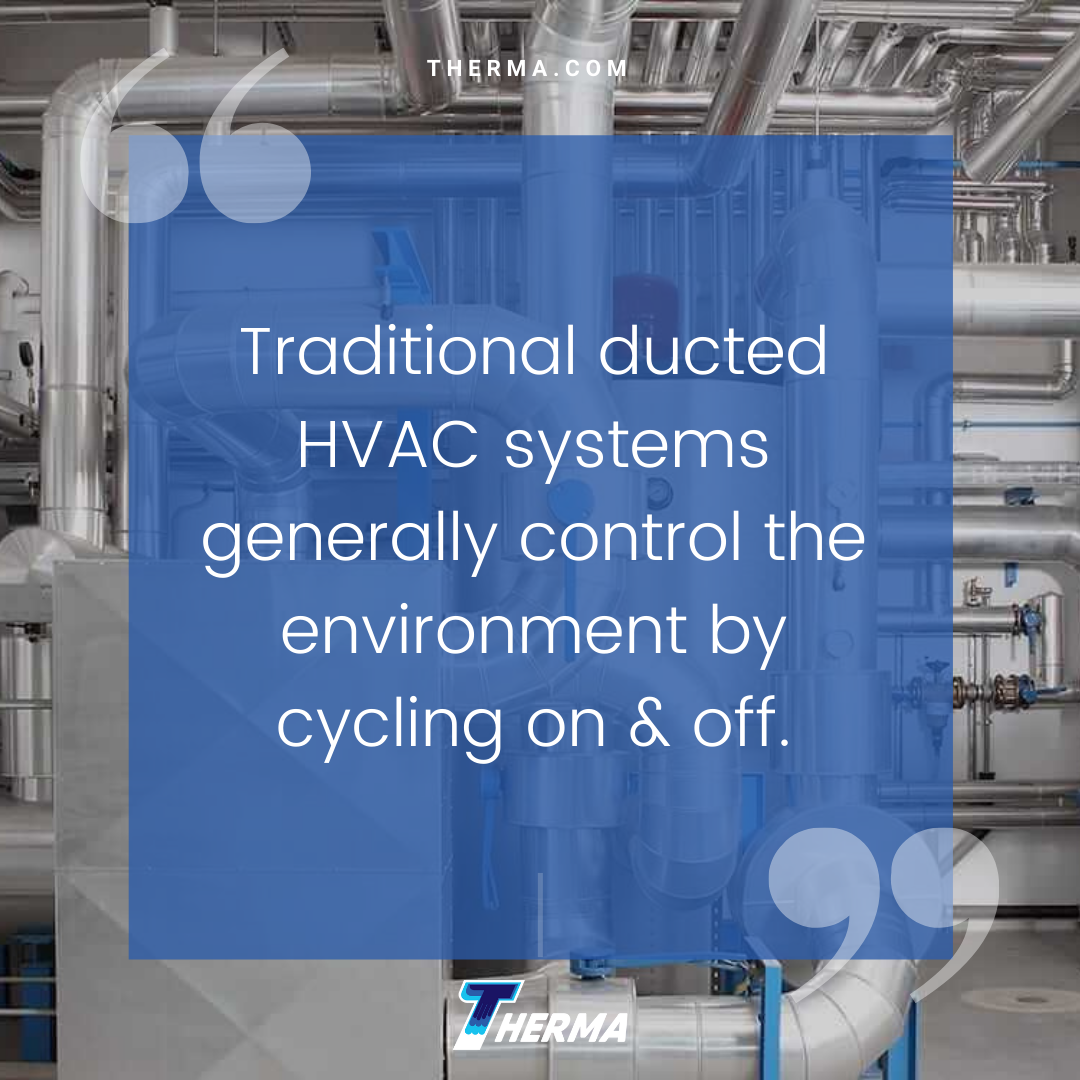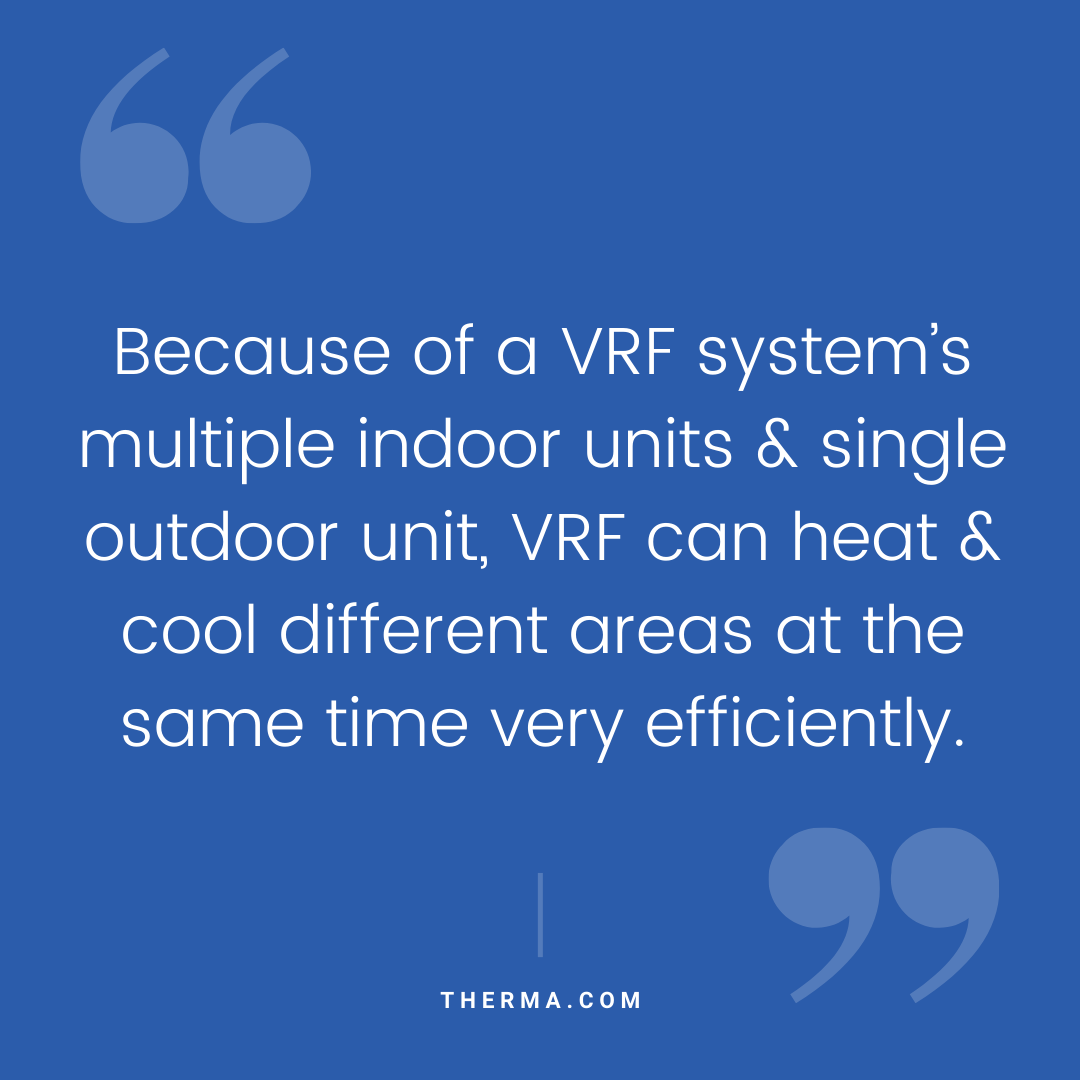by Patti Dees
Key characteristics of variable refrigerant flow (VRF) HVAC systems differ from more traditional HVAC systems and require changes in the way they are designed and installed. To maximize VRF performance and reduce the chances for damage to equipment or property, these systems should be designed and installed by manufacturer-certified technicians.
Differences Between VRF and Traditional HVAC systems
VRF system design and function differ from traditional ducted HVAC systems. VRF continuously runs refrigerant through long stretches of refrigerant piping to control temperatures in multiple areas. A branch selector controls the flow of refrigerant from the single outdoor condensing unit. The refrigerant flows to evaporators in the indoor units that control associated zones’ temperatures. Because of a VRF system’s multiple indoor units and single outdoor unit, VRF can heat and cool different areas at the same time very efficiently.
Traditional ducted HVAC systems generally control the environment by cycling on and off. These systems use far less refrigerant piping because units heat or cool air then disperse it via ducts, which is less efficient. Ducted systems support fewer zones, reducing the degree of control occupants have over their environment.
Why Is VRF Certification Important?
The differences between VRF and traditional ducted HVAC systems give VRF its edge. They also require changes in how the system is designed and installed.
This type includes more extensive refrigerant piping than other HVAC systems. Piping sizes are not uniform but differ based on the refrigerant (liquid or gas) phase and the allowed refrigerant quantities for a given volume of occupied space. Each manufacturer has its own piping configurations and valve arrangements to handle the refrigerant in its multiple phases.
VRF systems operate across a broad temperature range. An article published in Insulation Outlook describes the range as covering “the extremes of a retail food-case refrigeration system to a low-pressure steam system.” They require specialized materials, fittings and valves to accommodate this temperature span.

Proper insulation is important for any HVAC system to control heat loss and to reduce condensation and ice buildup. Heat loss reduces the effectiveness of the system, while moisture contributes to corrosion and water damage. Inadequate and unsealed insulation of pipes, valves, or even pipe supports is especially detrimental to the HVAC system’s performance. For these systems, condensation is more likely to occur with poor insulation than in a traditional system, and the higher-temperature pipes may corrode beneath the insulation.
Changes in the field during installation may require more than simple substitutions. Designers should review changes to verify they will not adversely affect the system as a whole, ideally before the changes are made.
Final Thoughts
Certification means that HVAC designers, engineers and technicians understand the principles needed to optimally design systems tailored to each project’s needs. These professionals ensure that the system functions safely and speed up the installation process. Best of all, certification satisfies the manufacturer’s requirements for extended warranties so building owners can protect their investment.
Contact us today to work with our VRF certified technicians!
Patti draws on her background as a chemical engineer to share information with readers on technology, manufacturing, and construction.
Sources:
https://www.achrnews.com/articles/143349-the-importance-of-vrf-system-certification https://insulation.org/io/articles/new-hvac-technology-emerges-vrfvrv-systems/https://www.csemag.com/articles/back-to-basics-vrf-systems/https://www.therma.com/the-benefits-of-vrf-vrv-systems/








